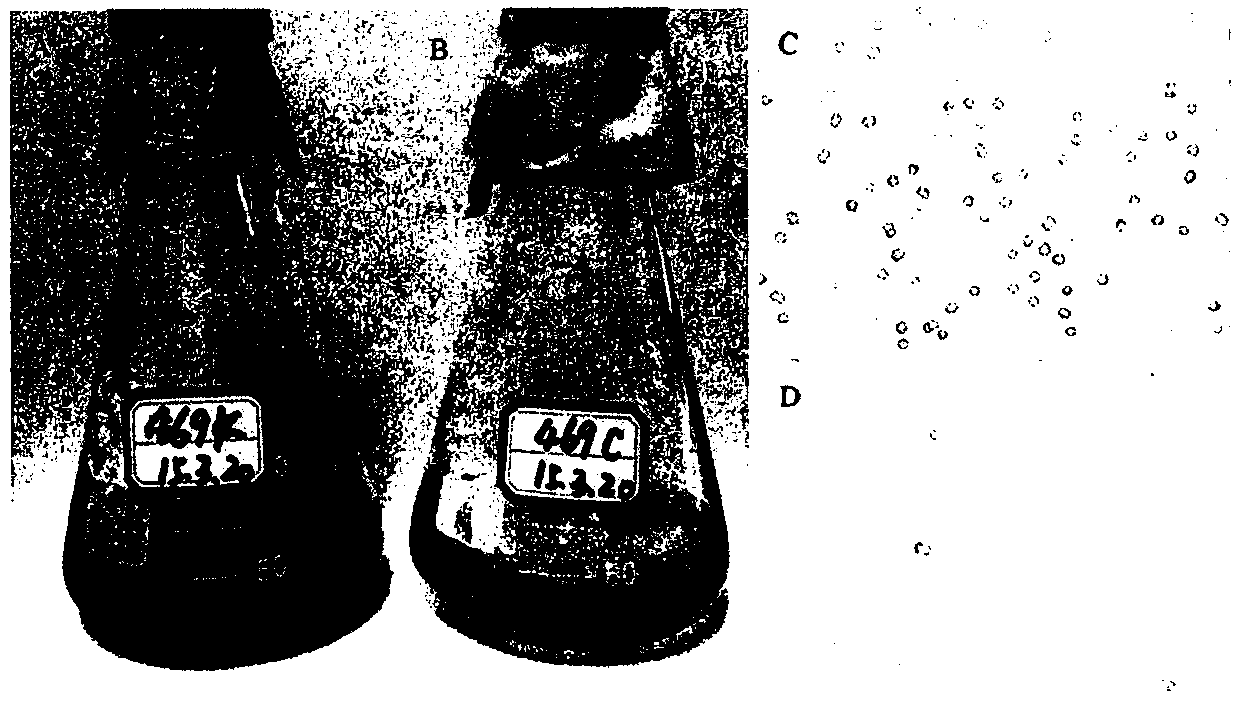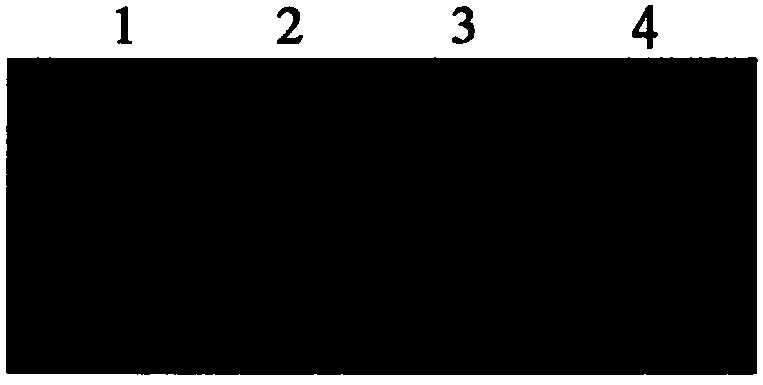Pyrolysis phycophage MACPNOA1 and application thereof
A technology of cyanophages and algal plaques, which is applied to the lytic cyanophage MACPNOA1 and its application in the control of cyanobacterial blooms, can solve the problems of reducing algae density, affecting primary productivity, and reducing the incidence of photosynthesis, etc. Achieve the effects of wide cleavage spectrum, rapid lysis, and simple culture conditions
- Summary
- Abstract
- Description
- Claims
- Application Information
AI Technical Summary
Problems solved by technology
Method used
Image
Examples
Embodiment 1
[0031] The preparation method of cyanophage MACPNOA1 is as follows:
[0032] (1) Preliminary isolation of cyanophages
[0033] The surface water sample was collected from the South Gate Ditch of Ningbo University, Ningbo City, Zhejiang Province, centrifuged at 10,000×g for 30 minutes, the supernatant was filtered through 0.8 μm and 0.45 μm filter membranes, and the filtrate was mixed with the aeruginosa microcapsules in the logarithmic growth phase Algae (M.aeruginosaFACHB-469) were mixed in a volume ratio of 1:2; at the same time, the BG11 algal culture medium was added to Microcystis aeruginosa in the logarithmic growth phase in the same proportion as a control; , the temperature is 25°C, and the light-dark cycle is 12h: 12h, cultivate under the condition of 12h:12h, obtain the yellowed culture fluid, and observe the algae fluid with a microscope to confirm the lysis of the algae ( figure 1 ). The yellowed culture solution was centrifuged at 10000×g for 30 minutes, the sup...
Embodiment 2
[0045] Morphological observation of lytic cyanophages
[0046] The cyanophage suspension obtained in Example 1 was dropped on a copper net, negatively stained with 2% uranyl acetate solution (w / v), and placed under an electron microscope (Hitachi H-7650) to observe the cyanophage. form.
[0047] The cyanophage has a round head structure and a slender non-retractable tail. The capsid diameter of the head is about 40nm, and the length of the tail is about 380nm.
Embodiment 3
[0049] Analysis of cyanophage genomes
[0050] The cyanophage isolated and purified in Example 1 was taken, and after the nucleic acid was extracted, they were treated with DNase I, Rnase A and S1 single-stranded nuclease (S1 Nuclease) respectively, and the treatment method was carried out according to the instructions of Takara. The processed sample was subjected to agarose nucleic acid electrophoresis, and the obtained spectra were as follows: image 3 As shown, where Lane 1: DNase I enzyme treatment, Lane 2: Rnase A enzyme treatment, Lane 3: S1 Nuclease enzyme treatment, Lane 4: Untreated nucleic acid. The result shows that this cyanophage nucleic acid can be digested by DNase I, but can not be digested by RNase A enzyme and S1 Nuclease enzyme. The results showed that the genome of cyanophage MACPNOA1 was double-stranded DNA (dsDNA); the genome DNA of MACPNOA1 was sequenced by next-generation sequencing. According to the "Classification of Viruses-The Eighth Report of the...
PUM
| Property | Measurement | Unit |
|---|---|---|
| diameter | aaaaa | aaaaa |
Abstract
Description
Claims
Application Information
 Login to View More
Login to View More - R&D
- Intellectual Property
- Life Sciences
- Materials
- Tech Scout
- Unparalleled Data Quality
- Higher Quality Content
- 60% Fewer Hallucinations
Browse by: Latest US Patents, China's latest patents, Technical Efficacy Thesaurus, Application Domain, Technology Topic, Popular Technical Reports.
© 2025 PatSnap. All rights reserved.Legal|Privacy policy|Modern Slavery Act Transparency Statement|Sitemap|About US| Contact US: help@patsnap.com



